Table of Contents
Advantages to This Crazy Design
Who needs all these handles, angles, and the cambered shape?
To explain, let’s look at a simpler version first. Until a couple years ago, you would mainly have seen the non-cambered version of this kind of bar:
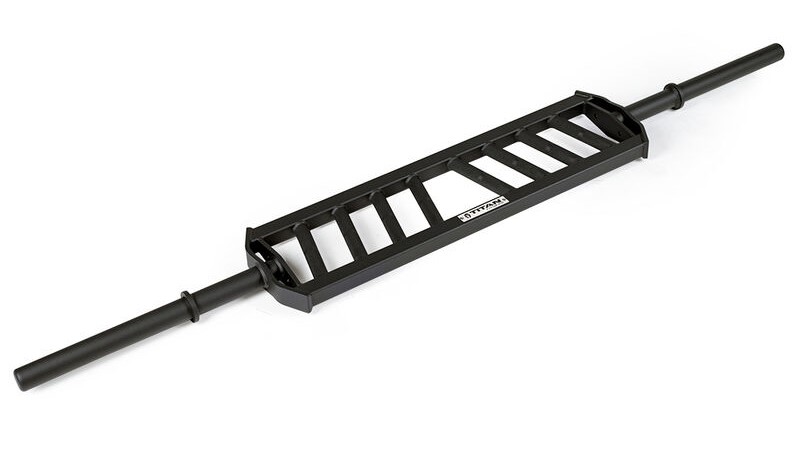
The above is known as a Swiss bar or football bar. Some say that a Swiss bar refers to a design with 90° handles, while a football bar has angled handles like the above. The concept is much the same: Give the user options for a more neutral grip (palms facing), and along with that comes the need for varying grip widths to accommodate different sized users, different exercises, or preferences.
Traditional straight-bar bench pressing can aggravate shoulders, elbows and wrists with the way the joints are twisted under load. Small injuries can stick around forever when you keep doing it. A neutral grip (palms facing) sets you up to press with your elbows tucked in closer to your body, aligning your shoulders, elbows and wrists in an easier way that might totally avoid aggravation and allow you to keep lifting heavy, working around your injury.
This position also works your triceps more. Lifters find that after some time doing neutral-grip presses they are stronger in the upper portion of the straight-bar press when they go back to it.
For lifters who don’t want a full neutral grip and need to just barely work around joint discomfort and be able to utilize most of their strength they would use for traditional bench presses, the angled grips are perfect.
Aside from bench presses, bent-over rows, and seal rows, the bar can come in useful as a replacement for other specialty bars like tricep bars and curl bars, particularly for doing hammer curls and skull crushers. You might find it handy for other exercises too.
Why the cambered design?
The camber does two things.
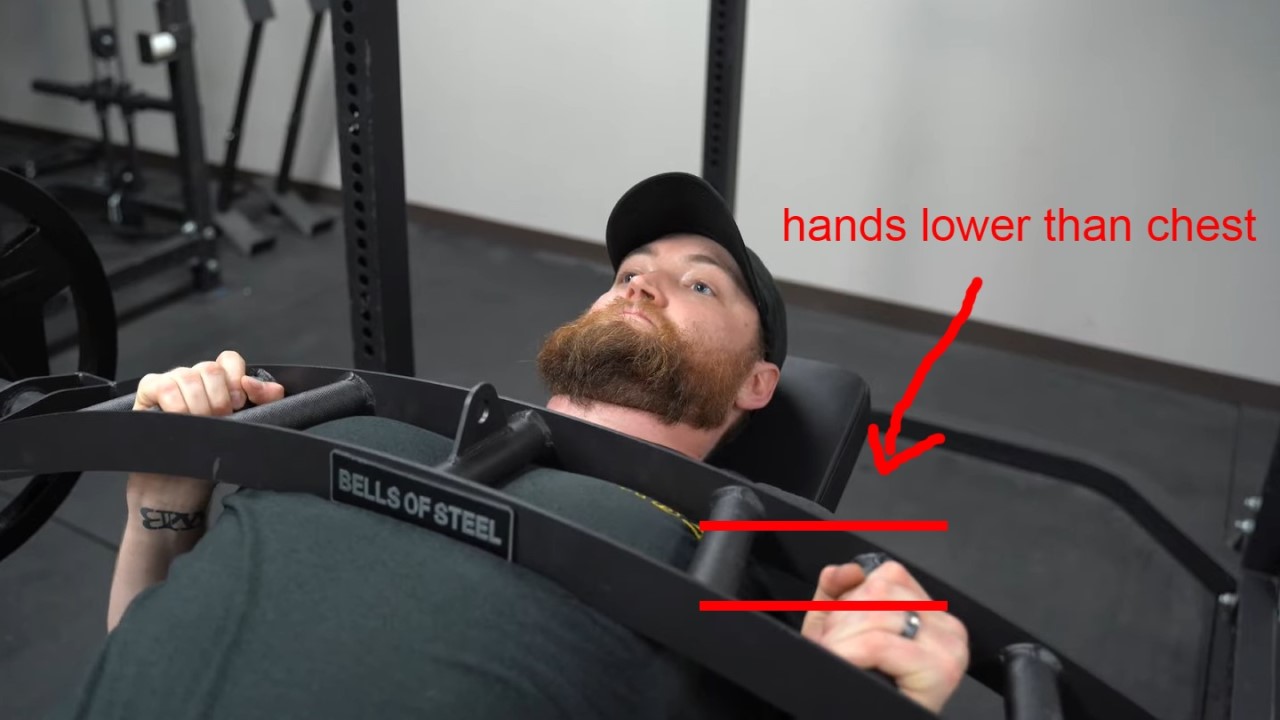
First, shown above where you would ordinarily hit your chest with a straight bar bench press, by using grips below the peak of the camber you’ll be able to bring your hands down further before the bar hits your chest. This is useful also for bent-over rows, letting you pull your hands past your abdomen. Note that these advantages only apply if you use one of the wider grips. A narrow grip right in the middle of the camber would be like using a straight Swiss bar.
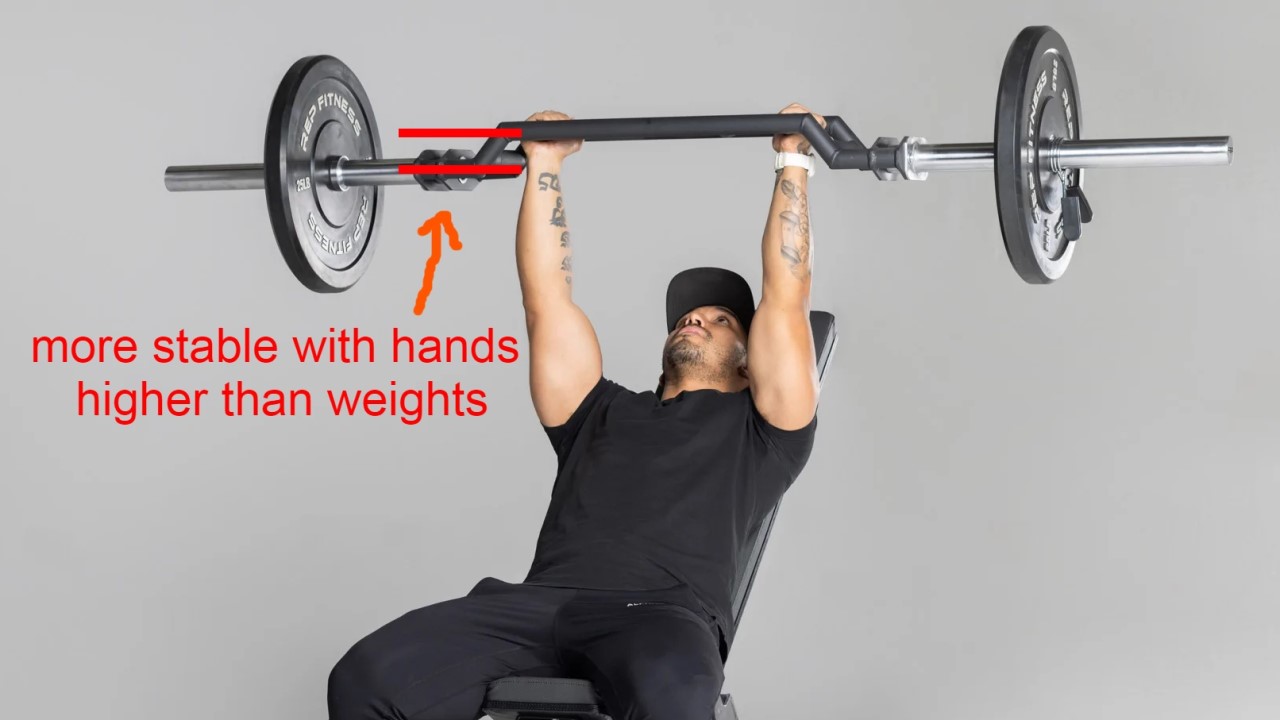
Second, if you instead press with any inner grips above the plane of the sleeves, the bar kind of hangs down below your grip to stabilize it against wanting to rock forward or backward so much, the same as the raised handles on a hex deadlift bar.
For a more description of how the different camber styles on these featured bars change these effects, See the section further below, How Camber Styles Impact Stability and Range-of-Motion.
Disadvantages
Most of the bars featured here are one-piece welded construction, using pipe steel on the end instead of sleeves that rotate over a solid inner shaft. Rotation is not really necessary on bars like this. However, as you might have run into with axle bars, the pipe used is crafted for an inside diameter, leaving the outside diameter an annoying 48mm instead of close to 50mm. This causes plates to fit sloppily, but even worse, most collars will not tighten on them. There are a couple exceptions here with 50mm sleeves.
The bar takes up a lot of space and can’t be used as a replacement for all traditional straight-bar exercises. It remains a specialty type of bar that not everyone will find enough use for to justify having.
Quick Comparison Chart
Scroll right to see all 8 bars.
| Rogue MG-4C & MG-4CN | Kabuki Kadillac V3 | Black Widow Training Gear | elitefts Cambered Grip Bar | Stray Dog Strength | Titan Fitness | Rep Fitness | Bells of Steel Arch Nemesis | |
|---|---|---|---|---|---|---|---|---|
| Camber Type | arch | arch | offset | offset | arch | offset | offset | arch |
| Rackable Width | 41″-51.5″ | 40.5″-53.7″ | 40″-52″ | 39.5″-50.5″ | 39″-51.75″ | 39.25-53″ | 37.4″-51.4″ | 40.5″-50.3″ |
| Handle Knurl | yes | yes | yes | no | yes | yes | yes | yes |
| Handle Angles | 0°, 16°, 20° | 10°, 12.5°, 15° | 0°, 15° | 20° | 0° | 0°, 30° | 0°, 11°, 22° | 10° |
| Handle Diameter | 28.5mm or 32mm | 34mm | 33.5mm | 35mm | 28.5mm | 31mm | 35mm | 29mm |
| Handle Length | 6.75″ or 5″ | 6.5″ | 5.25″ | 6″ | 6″ | 7″ | 9″ | 5.2″ |
| Overall Width | 8.75″ or 7″ | 7″ | 8.25″ | 9″ | 6.3″ | 10″ | 12″ | 5.5″ |
| Sleeve Diameter | 50mm | 50mm | 48mm | 48mm | 48mm | 48mm | 50mm | 48mm |
| Sleeve Rotation | yes | yes | no | no | no | no | no | no |
| Sleeve Coating | powder coat or stainless steel | bright zinc or powder coat | powder coat | powder coat | bright zinc | powder coat | powder coat | powder coat |
| Color Options | black or stainless steel | sleeves: bright zinc or matte black | no | no | many colors but only for 5+ qty | no | no | no |
| Made In | USA | USA | USA | USA | USA | China | China | China |
| Price | $425 | $495 | $300 | $315 | $525 (code TWOREP for 10% off) | $230 | $290 | $200 |
How Camber Styles Impact Stability and Range-of-Motion
In the chart I’ve noted these as “arch” or “offset”. Perhaps there are better words. By “arch” I mean bars with handles available along the gradual slope to the apex of the camber, which can be tremendously useful as I’ll explain. The “offset” bars have some handles in the same plane as the sleeves, and some handles that are abruptly offset a few inches, with no in-between choices. The arch type is the superior choice for overall adaptability in training, which I’ll try to make the case for here.
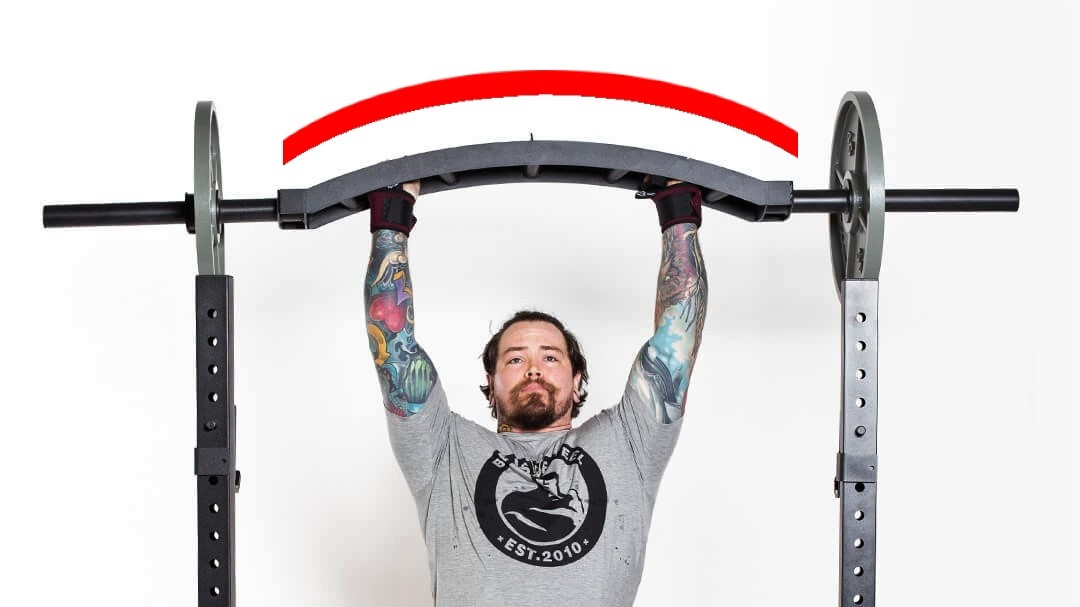

if you’re pressing with outer handles on the plane of the bar sleeves, you’ll find it’s unstable and be forced to center your hands just right to prevent the bar from rocking forward or back. If you’re pressing with inner handles at the top of the apex or anywhere on the slope of a bar with an arch camber, the hanging effect will keep the bar stable! An advantage that straight Swiss bars don’t offer.
The range-of-motion benefit is directly opposite to this. If you press with outer handles on the plane of the sleeves, you’ll get extra range-of-motion as the camber is above your chest.
So you’re forced to choose between range-of-motion and stability. As I mentioned at first, if you pick a set of handles that are only a little ways up the arch, you get a little of both.
For pulling movements like bent-over-rows or seal rows, it makes most sense to use the outer handles, or you could flip the bar around to use the inner handles with the camber facing your body.
How to Interpret the Other Specs and Pick a Good Bar
Rackability
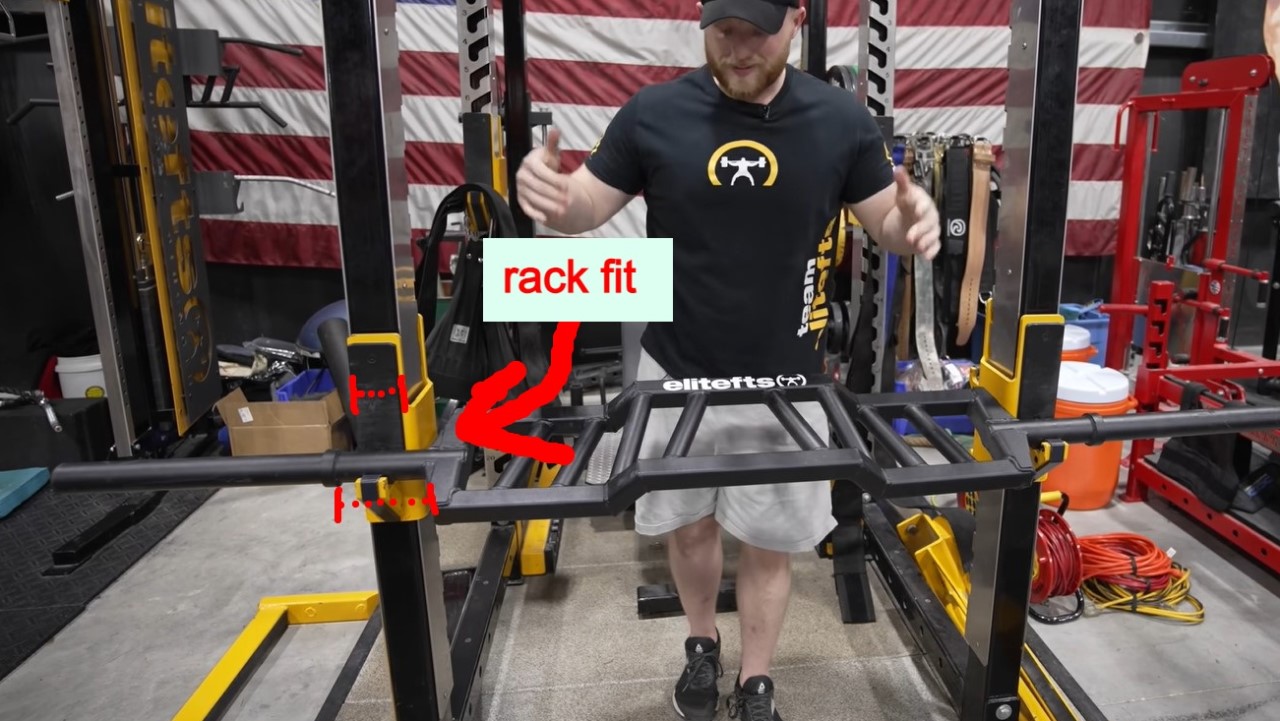
Out of the non-cambered multi-grip bars (ie: traditional Swiss bars), only some have fit on power racks. All the cambered ones that I’ve seen anywhere are rackable, as shown above.
An issue is power racks vary a little in width, and this type of bar only has so much space in its rackable area for lateral wiggle room so you can get away with racking the bar a little off center.
To illustrate, let’s see how the Rogue MG-4C (and MG-4CN, the same in this regard) fits a couple different racks. It has a rackable width of 41″ apart on the inner edge by the handles and 51.5″ on the outer edge by the sleeves.
Good Fit Example: A Rogue Monster Lite rack is 43″ inside width and 49″ outside width (because each upright is 3″). Compare with the rackable area of the MG-4C bar, and you’ll note it has only 2″ of wiggle room on its inside edge, and 2.5″ on the outside edge. That works ok.
Bad Fit Example: The Titan X-3 rack is 42″ inside width and 48″ outside width. With the same bar, you have only 1″ of wiggle room on the inside edge. If you think that sounds like enough, remember that’s total, meaning when you have the bar centered you only have 1/2″ of room to move left and 1/2″ to move right. Technically it fits, but not great.
This is why it’s important to make sure you get a bar that has a rackable area that centers well on your particular rack. The Kabuki Kadillac bar or Rep Fitness bar have generous rackable areas that will give you lots of wiggle room.
Handle Angles
0° is a neutral grip, palms facing. This is known as the safest position for people who need to work around joint issues. Some bars have angled grips that you can use as a semi-pronated or semi-supinated grip, depending on the exercise, for your ideal comfort and effectiveness.
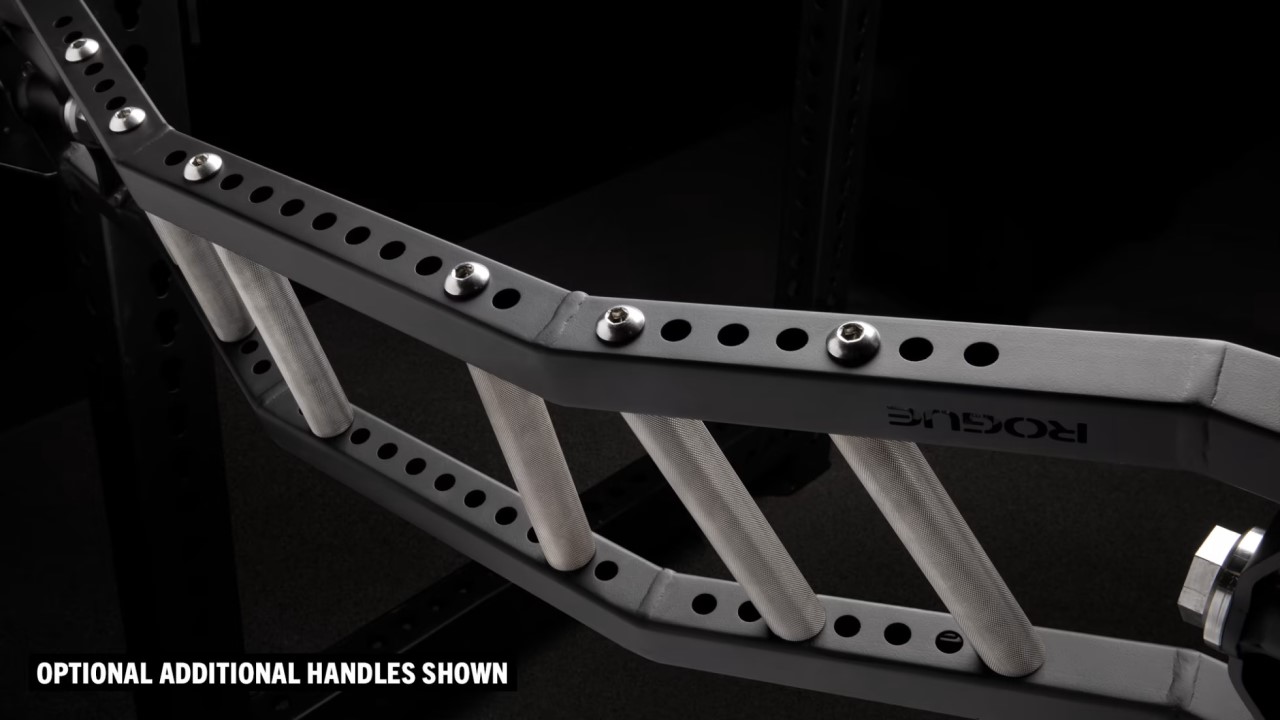
Rogue has a unique modular setup on their MG-4C and MG-4CN. You decide how many 0°, 16°, and 20° handles you want, and you install them at any locations on the bar, which has holes every 1″. This gets around all issues that users have with the spacing of each set of angled handles. Basically fully customizable. The catch is you have to pay for every additional pair of handles beyond 1 pair included in the base price.
Handle Diameter
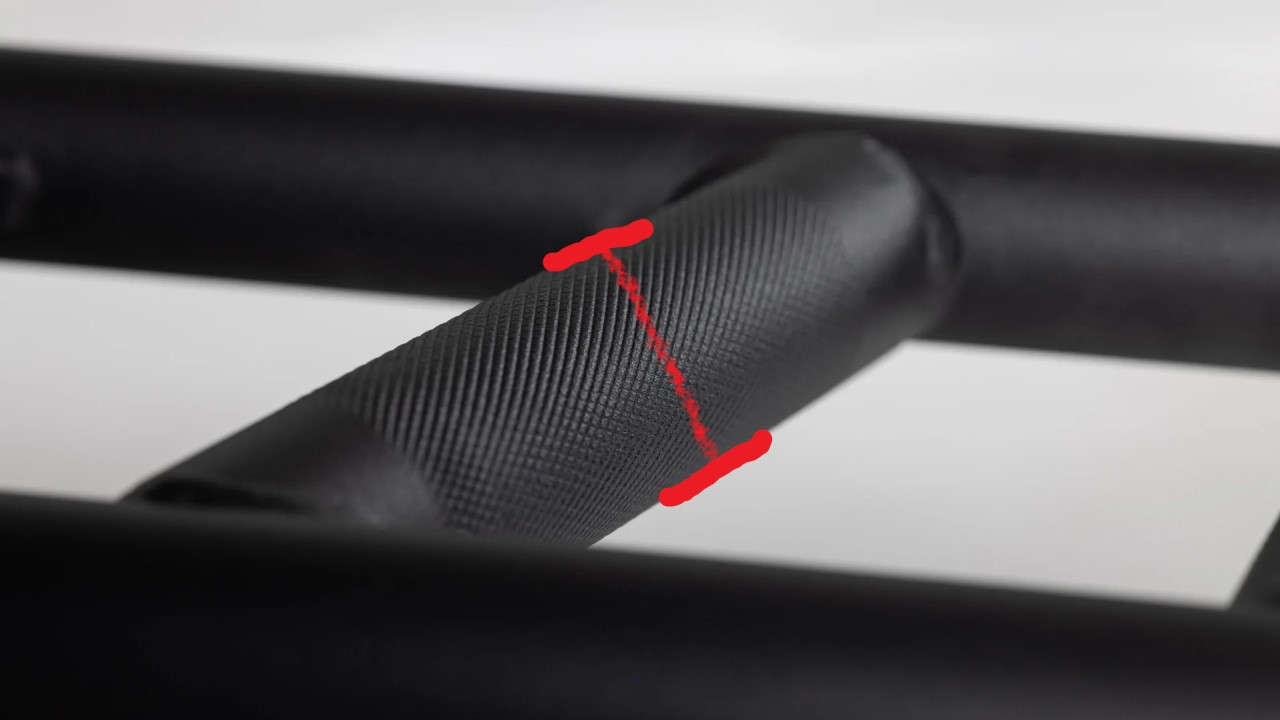
With traditional straight bars, 28mm is known as a good grip diameter for heavy pulling movements, while 29mm or larger is more comfortable for heavy presses. It all comes down to preference and what you plan on using it for. No size here is necessarily better for everyone.
Handle Length & Overall Bar Width
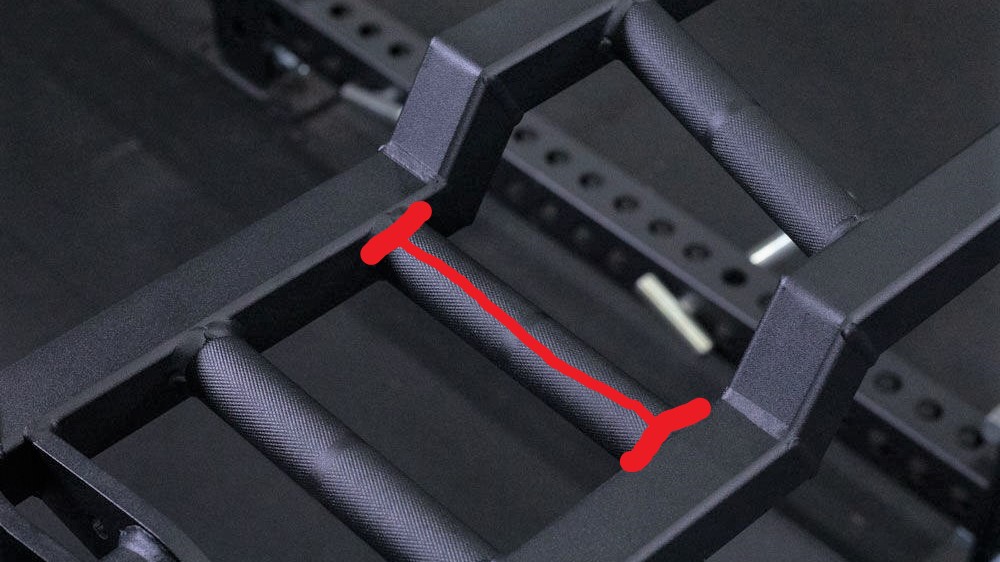
First, the longer the handles, the more unstable the bar will seem, with a tendency to rock forward or backward. It’s mostly about it being harder to center your hands accurately with longer handles. However, to illustrate by appealing to an extreme, if the handles were a ridiculous 5ft long it’s easy to say that you would have a hard time balancing it no matter how well placed your hands are, implying that even a couple inches’ difference in the handle length technically makes it more unstable. I think it’s due to the inertia of the extra weight farther out.
The Rogue MG-4CN is the “narrow” version of the MG-4C, having 5″ long handles to make this easier, whether you’re pressing or pulling. The Arch Nemesis bar isn’t far behind at 5.2″. Typical sized hands will fit on a 5″ handle. Just measure the width of your fist if you have exceptionally large hands. You do need a little room on the handle to adjust, because your preferred pivot point isn’t necessarily right in the center of your hand.
Titan Fitness came up with the feature of a knurl ring on each handle so you can figure out the perfect position of your hands by feel and repeat it each time.
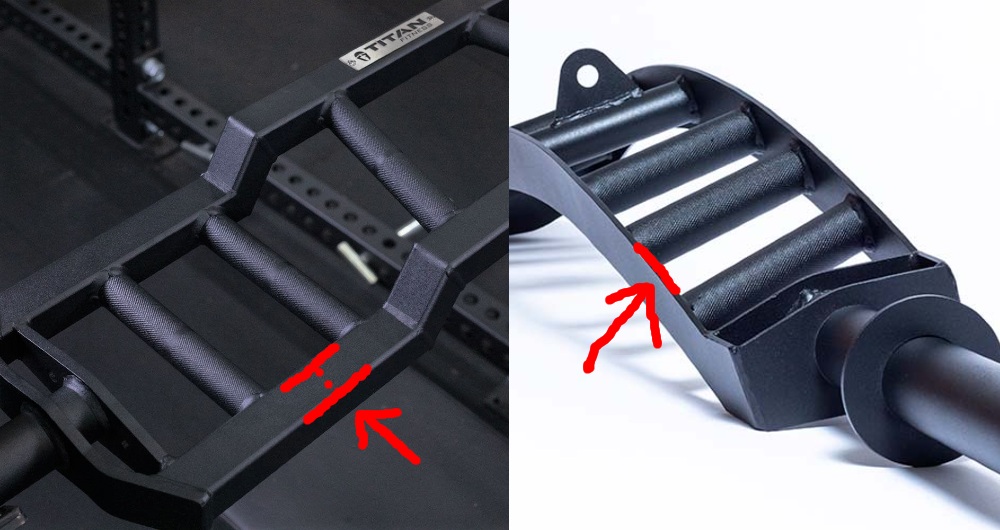
If long handles make this type of bar feel more unstable, a thicker and heavier frame along the ends of the handles does too, or at least it holds more inertia to make it slightly harder to rebalance if it starts to rock. Some of these bars have tubing there, while others have a single steel sheet, shown above. Therefore the unstable effect of longer handles on the Kabuki Kadillac is somewhat mitigated, while the Rep Fitness version is the most unstable with long handles and a tubed frame.
Remember that this effect only occurs the most when you’re gripping handles in the same horizontal plane as the sleeves (or below the plane of the sleeves, if you have the bar flipped over).
Sleeve Type and Rotation
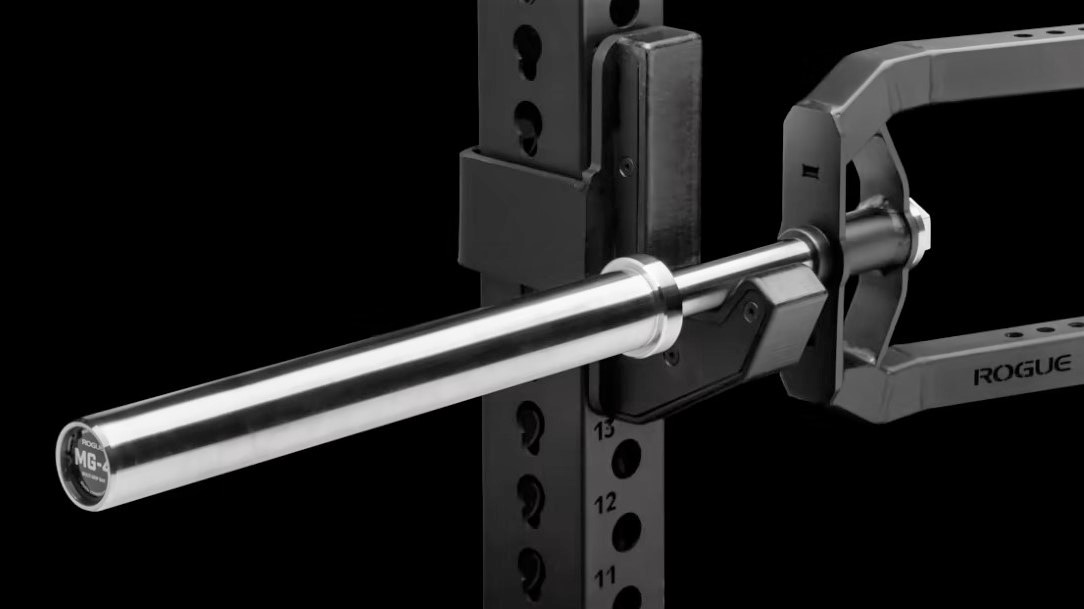
The end sleeves on most of these bars where you load weights aren’t really sleeves, because they are non-rotating pipes that are welded on. You don’t normally need this kind of bar to have rotating sleeves, with the exercises typically done with it.
As with axle bars, such pipe has an outside diameter of 1.9″ / 48mm, creating not only slop with plate fit but more importantly causing many collars to not fit! Cheap spring clip collars actually will hold reasonably tight, or some strap type collars or whatever the particular store might include with the bar in some cases.
The Rogue, Kabuki, and Rep Fitness sleeves are sized the best. As always, the actual diameter of olympic bar sleeves is roughly in the range of 49.6mm to 49.8mm to accommodate plates with an exact 50.0mm center hole. So when I say 50mm in this article, I mean a little less.
The Rep Fitness bar is unique in that it has good ~50mm sleeves but they’re welded on. I think that’s a good choice, eliminating the expense of unnecessary rotating sleeves while having a good size.
Coating
Powder coating, while rare on a traditional barbell, is common on these kinds of specialty bars. While the frame and handles are fine being powder coated, it’s not the most durable coating for the portion of the bar that you’re racking with (between the grips and sleeves), because it has a tendency to chip away. If your rack has UHMW liners on the J-hooks and safety bars, or you’re in any other way not making metal-to-metal contact, a powder coat should hold up well. Otherwise stainless steel holds up the best for metal-to-metal contact, and the next best is zinc, which will scratch off but not as badly as powder coat. The same consideration goes for the sleeves you’re sliding plates on.
Top Picks
Personally, I would want the “arch” camber, handles that are on the shorter side, and a 50mm sleeve diameter. This narrows it down to the Rogue MG-4CN. The adjustable design takes the risky guesswork out of what handle positions I might want, with the only risk being that I might have to buy another pair of handles. At $45 per pair of handles, that adds up.
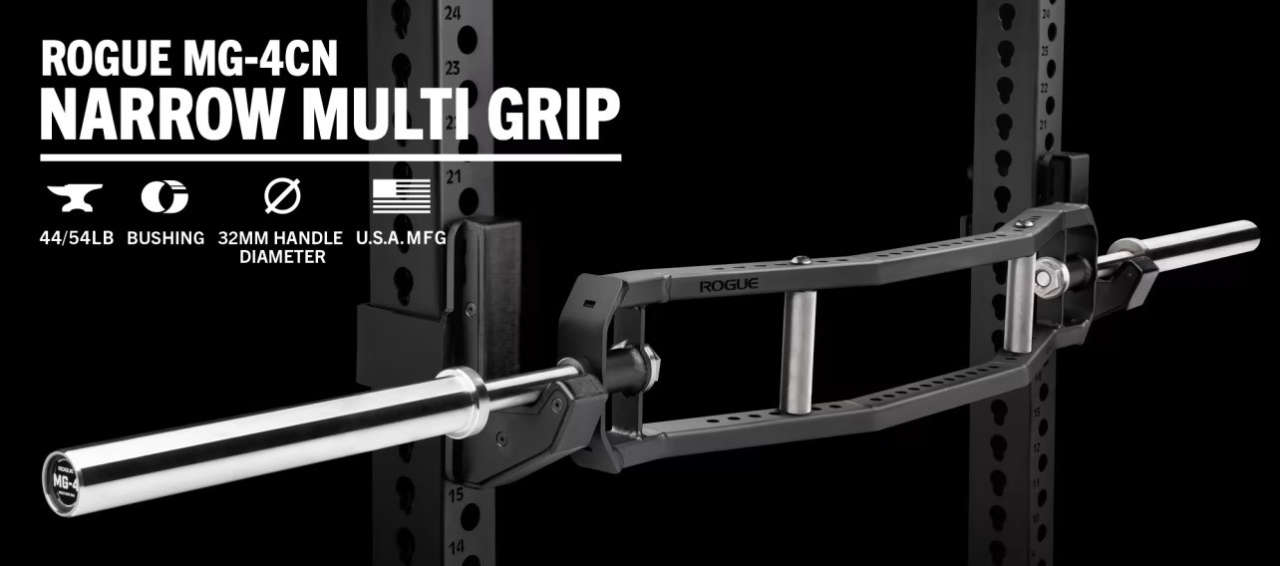
However, I currently have a Titan rack that won’t fit this bar optimally, as described in the Rackability section. That probably means I’d go with the Arch Nemesis bar that goes with the Titan rack better, and I’d learn to deal with the 48mm sleeves. Should you have a cable machine, it’s also the only bar here with a cable attachment eyelet.
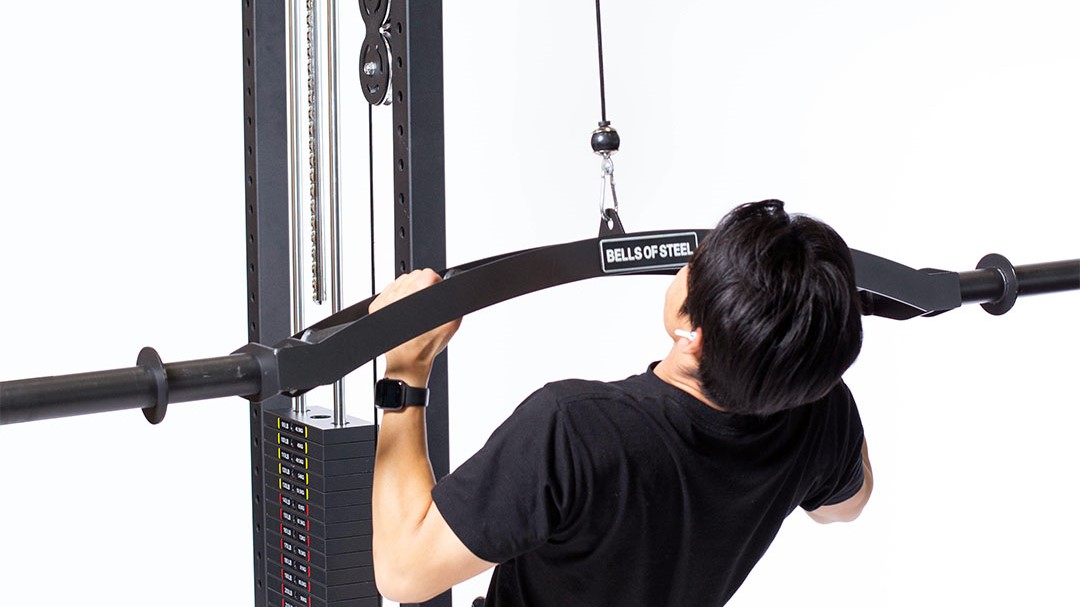
Your requirements might differ, which is why I outlined all of these features!
Did I miss any critical considerations that you feel should be included? Share your thoughts below!

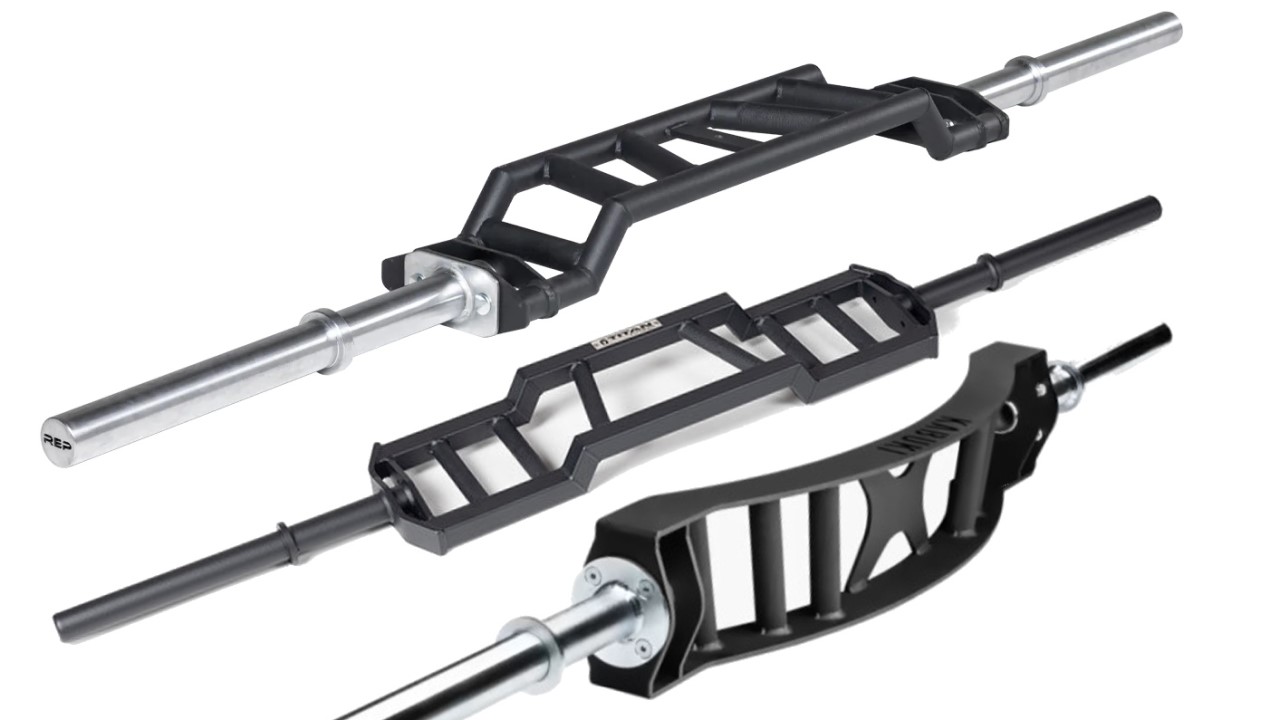
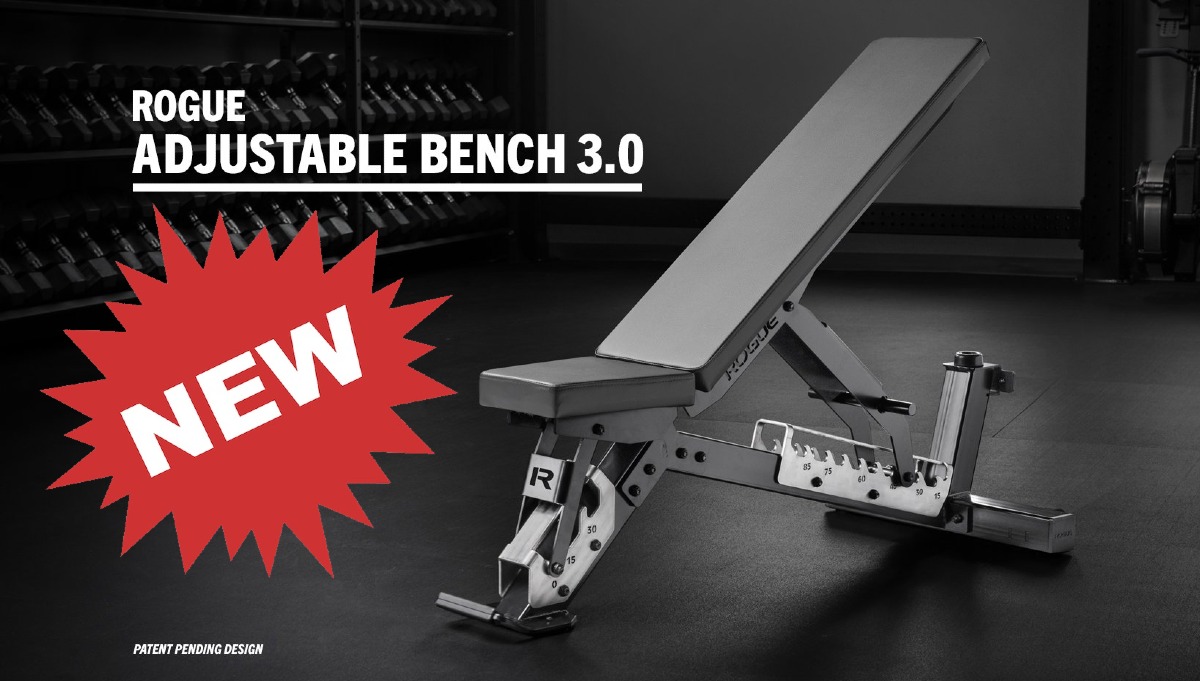
Thank you for this write up, I am sold by your review and others that the rogue and kabuki options are the best. Do you anticipate that any companies like Titan or REP will produce an arched bar with 50mm sleeves? I personally wince at the price tag of Kabuki, though I understand.
Maybe. Rep and Titan both have a history of revising their products over time in response to feedback. Maybe send them a note to tell them why you haven’t bought their version.
I have been using the BoS Arch Nemesis bar for over 2 years. My favourite bar for bench press. Grip space is narrower to easily centre your hands and volume of frame material and weight on the perimeter of the frame is less than other bars which also helps to increase stability.
Also like the bar for bent over rows due to the extra range of motion.
I do not use the bar for lat pulldowns due to limited space and the overall width of the bar.
That’s a good point about the size and weight of the frame perimeter influencing stability, and that’s going to matter just as much as the handle length. I’m going to have to revise the section about that. That’s why I need you guys, I always miss something!